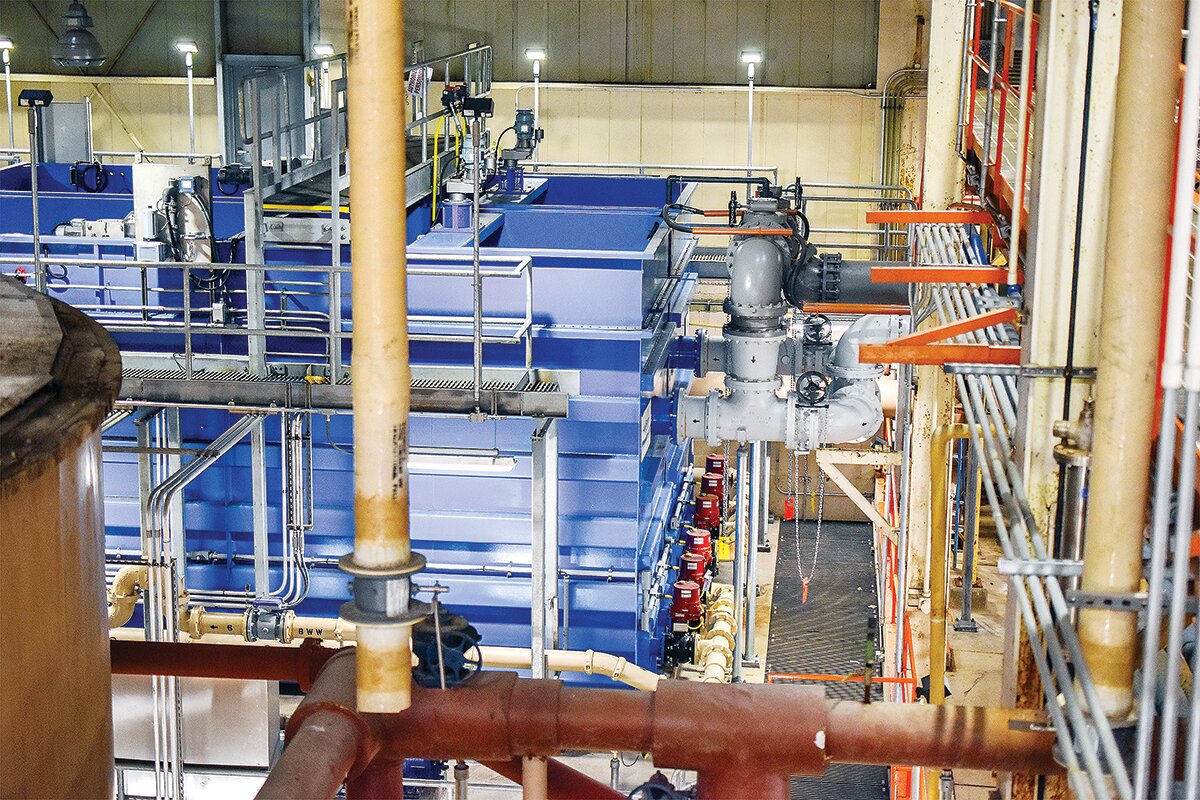Support the Timberjay by making a donation.
Ely wastewater treatment upgrade now complete
ELY- The city of Ely recently declared the completion of its $8.5 million project to update its waste water treatment facility, (WWTF) allowing the plant to meet stricter federal standards for …
This item is available in full to subscribers.
Attention subscribers
To continue reading, you will need to either log in to your subscriber account, below, or purchase a new subscription.
Please log in to continue |
Ely wastewater treatment upgrade now complete
ELY- The city of Ely recently declared the completion of its $8.5 million project to update its waste water treatment facility, (WWTF) allowing the plant to meet stricter federal standards for mercury. In addition, the project also allowed the city to fix how peak stormwater flows transit the facility and added features to make the plant safer for employees. The Timberjay toured the plant recently to see the improvements.
Prior to 2021, the facility lacked adequate biosolids storage and had no means to prevent the washout of the phosphorus treatment tank by stormwater. And the sand filtration unit was not up to the task of meeting stricter mercury standards.
The city hired the firm AE2S to design a solution to both of these issues and the company ran a successful pilot study in 2020 using cloth media filtration to remove mercury. The firm then designed a full-scale filtration system using cloth media along with other plant upgrades.
Ely secured four grants which covered 96 percent of the project’s price tag. Construction began in April 2022.
What’s new
Influent and stormwater flows into the plant, first entering the headworks, where solid materials are removed from the fluids. All the solid stuff like dropped coins, toys, razor blades, and other things you’re not supposed to flush down the toilet get removed at the headworks. The headworks has new pumps, screens, and de-gritting equipment.
After the headworks, all water flows to a splitter box. The splitter is designed to divert peak stormwater flows away from the tank where phosphorus is removed by biological agents. Preventing excess flow to the phosphorus treatment tank “keeps the bugs alive” that remove the phosphorus and other unwanted nutrients, Ely Clerk-Treasurer Harold Langowski explained.
The plant now has piping to divert peak stormwater flows out of the splitter, plus a new “ship’s stair” to access the splitter box, and new gate valves to control the flows out of the splitter.
Before the new equipment around the splitter, employees had to climb a vertical ladder and stand on a narrow landing to operate the old, difficult-to-open valves. The new access, platform, and valves greatly improve safety.
After flows exit the splitter, they are treated for phosphorus unless the plant is experiencing peak flows. The water then moves through clarifiers, filtration units, and treatment tanks. It is disinfected with chlorine at the filtration step and then dechlorinated before being discharged to Shagawa Lake.
The project removed the old sand filtration unit and replaced it with two cloth media filtration tanks, each of which can filter three million gallons a day. The filters are huge disks on a shaft that runs the length of each tank. The cloth media looks like green shag carpet but is really an engineered synthetic fabric. The water leaving the tank is clear and ready to discharge after dechlorinization. According to Langowksi, the facility’s results for treated water were currently “really good,” especially for mercury and total suspended solids.
In addition to the cloth media filtration tanks, the plant also has a new roof, new electrical utilities, and new lighting.
To address the lack of biosolids storage, the project included the construction of a new storage tank outside of the main plant building. Prior to the addition of the new tank, biosolids were stored in offline clarifiers.
Construction on the plant was mostly complete in June, with Langowski informing the city council at its Sept. 8 meeting that the plant was up and operating with all the new improvements online. At the Nov. 7 meeting, he told the city council, “the project is winding down,” and was “on its post-inspection and warranty period. The lion’s share of work is done,” he concluded.






